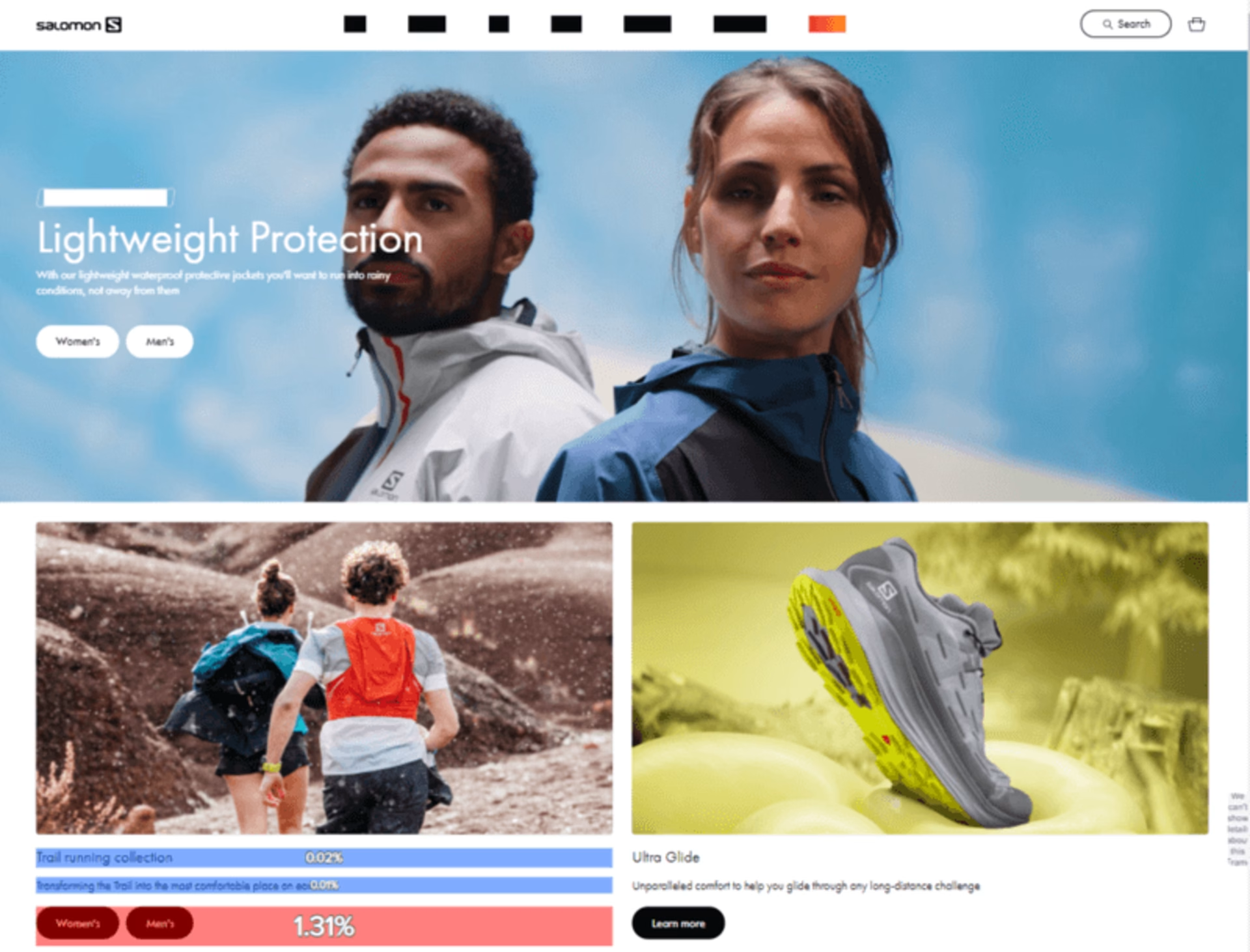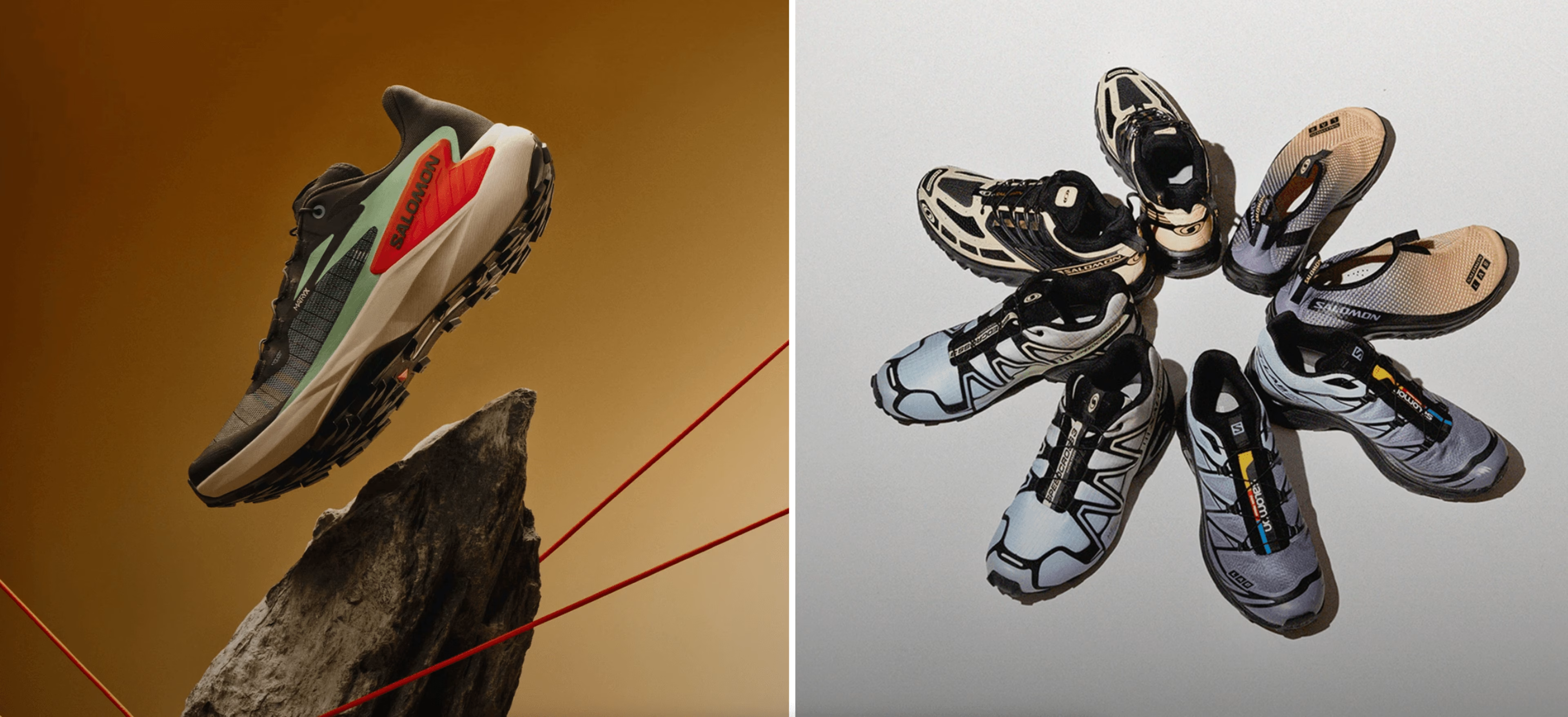The company
Salomon is a French brand founded in 1947 in the Alps in Annecy. Driven by passion and innovation, Salomon is the world leader in sports equipment, covering winter sports such as skiing and snowboarding, footwear such as trail running and hiking, and a wide range of sports apparel and bags.
What makes Salomon unique is its community: a family of outdoor enthusiasts. Now established worldwide, Salomon sells through its site, export partners, distributors, and its brick-and-mortar stores. Ecommerce activity for the brand has grown in recent years, placing optimizations and improvements at the center of the company's priorities.
To better understand the challenges facing the ecommerce team, we met with Marta Sitkowska, former Global Ecommerce Merchandising Manager, and Thibault Bourret, former E-Merchandiser at Salomon.
Both Marta and Thibault worked within the global ecommerce team. Marta drove the merchandising strategy for salomon.com, coordinating its implementation at a regional level. Thibaut managed their branded sites across 15 European countries, covering sales events, marketing activations, and projects.

With more than 800 employees, Salomon is sold across the world from North America and Japan to China and Europe. And like many retailers, they launch the majority of their collections online.
Here’s what Marta and Thibault had to say about Salomon’s challenges and strategy, plus their best advice for other ecommerce professionals.
The challenge
Thibault: We were working on an important global transformation for Salomon. Until recently, we had a B2B-focused business model with a strong network of retailers to market our products, particularly for skiing. However, thanks to the rise of digital, we focused on developing our D2C (direct-to-consumer) strategy within our own stores.
This was a hugely transformational challenge for us as our entire production and marketing chain needed to be 100% consumer-friendly. Our ecommerce site was therefore at the heart of this strategy. We had big goals and ambitions to ensure digital represents the largest share of revenue in the future.
To achieve that goal, we needed to provide the smoothest online experience possible. Without a flawless customer experience, we wouldn't achieve our D2C goal.
Marta: Absolutely. The ecommerce team was central to success. We also had growth objectives in China, Europe, and North America—with ecommerce sitting at the heart of this growth.
How do you define a flawless customer experience online?
Thibault: A high-performance, fast, and bug-free site, an excellent consumer experience with real monitoring, and a relationship program.
We were also one of the only brands to offer such a huge variety of products. Even with such an expansive product catalog, the user should be able to navigate easily. You must ensure you're offering each of your customers the best online experience possible while maintaining your reputation.
Marta: Although Salomon is extremely well-known to its core consumers, our audience was diversifying. With a range of sport styles and multisports clothing, we were looking to reach new, urban consumers. Our goal was to expand our target audience without losing our brand DNA—that’s what a strong customer experience means to us!
How do you prepare for the launch of a new collection?
Marta: There are several stages. Before each collection launch, I start by preparing a global sales promotion calendar which I share with each region to adapt for their local markets. We define the key messages, the necessary activations, and everything that’ll help develop the reputation of our brand. We also create a roadmap that defines the key moments of each collection.
Once the calendar has been created, our merchandising team creates a toolbox for each launch, including the assets, visual content (video, photo, etc.), the editorial line (which is unique for each campaign), and the entire digital experience (dedicated site, homepage, landing page, list pages, product pages, etc.). It’s important to put the product at the center of every new launch.
Thibault: The product catalog is very varied, so we had to make sure each product was well represented. For example, the specific product highlights and benefits are different for every product. During the launch, there are always challenges, such as supply chain management due to shortages or late products. This requires great agility which means you need to constantly adjust activation schedules.
Another very important stage is validation. Our goal was to launch campaigns as smoothly as possible, so our users shouldn't see any changes to the site and no error or maintenance messages.
Marta: The final check following launch needs to be systematic to provide a best-in-class experience. This is a good practice that should be applied to every product launch.

Anticipate and be agile. You can plan everything, but there will always be unforeseen events. You have to have a mindset of continuous optimization and adjustment because every campaign is different. So, I recommend analyzing and taking a step back; the learnings will help you adapt better in the future.
The solution
Once launched, how do you analyze the performance of your campaigns?
Marta: We had been using Contentsquare for 3 years and onboarding each new team member to the platform immediately. We used monthly and seasonal reports, and we always kept an eye on the Contentsquare dashboards. This meant we’re able to monitor all of our collections, measuring key metrics such as engagement and conversion rate across all pages.
By analyzing the data, we could understand the performance of our campaigns, which informed which AB tests we needed to prioritize. We could then test and closely analyze the performance of each optimization. Staying focused on data makes it possible to detect points of friction in the navigation, which helps to justify the changes in conversions we might have been seeing on the site.
Thibault: On the European side, we needed to personalize the experiences because different countries have different purchasing habits. This was where Contentsquare helped us a lot. We tracked engagement differences by country to build a more personalized and culturally-aligned content experience. For example, we knew that we could push cross-country skiing in Finland in December but not in Spain, where we promoted hiking products instead.
Contentsquare's all-in-one Experience Intelligence platform
How did Contentsquare help you prioritize your roadmap?
Marta: Contentsquare allowed us to be very visual in our analyses. It made our data much easier to communicate with our teams—especially with snapshots and dashboards.

Contentsquare makes it possible to open up data to all teams, including those who are not necessarily familiar with data. It also helps align on next steps as a team because you can prioritize and make decisions thanks to data.
Thibault: At Salomon, we avoided making decisions without data. Data helps us in all of our actions. And we always sought to go further. Our analytics teams worked on the implementation of the new merchandising analysis module with the help of Contentsquare, which delivered even more data and gave us a new degree of granularity that we’d not had before.


